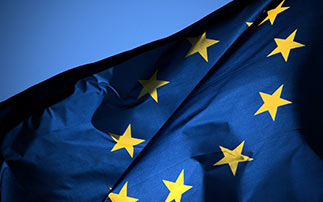As the current Multiannual Financial Framework (MFF) will no longer be in effect after 2020, the EU institutions are engaged in a process of reflection-in-action on the future EU budget for the 2021-2027 period. The future MFF should be marked by significant evolutions when it comes to programming. Meanwhile, the European Commission is not willing to wait… as it already launches calls for proposals for 2019-2020 that already forecast the new programmes.
The negotiations on the next Multiannual Financial Framework
As early as May 2018, the EC has published a proposal on a “Modern Budget for a Union that Protects, Empowers and Defends”, that would amount to €1,279 billion for the 2021-2027 period. The institution has taken this opportunity to provide, for the first time, a more flexible framework to be able to respond to successive crises as the EU have known for a decade. The European Council of December 2018 has highlighted the intense preparatory work already carried, and shows its optimism for an agreement to be reached by the autumn of 2019.
What major changes to be expected? Rationalisation, grouping and emergence of new themes
Although few programmes will be merged or see their names changed, and even though some priorities have been (re)defined – such as the “Security and Citizenship” priority that will be separated into two distinct themes (namely “Migration & Border management” and “Security & Defence”) – the new programmes will not be a revolution:
- For instance, the framework programme Horizon 2020 for research and innovation will become “Horizon Europe”, with the notable creation of a European Innovation Council (EIC). The budget for this programme will rise to €100 billion;
- The next MFF will also mark the full achievement of the European Defence Fund, with €13 billion allocated to this programme. In the meantime, the EC has already launched a pilot action aiming at the funding of common industrial projects on defence equipment, with an expected envelope of €500 million and the first calls to be launched over the next weeks;
- As for the ESIF, one notable change: the European Social Fund (ESF) will become the ESF+, and will include the Youth Employment Initiative (YEI), the Fund for European Aid to the most Deprived (FEAD), the Employment and Social Innovation (EaSI) and the EU Health Programme;
- In general, several funds will benefit from a substantial increase, such as the programmes that answer “Migration & Border management” (+160%), “Youth” (+120%) and “Climate Mainstreaming” (+60%).
2019 and 2020 programming: two very active years for EU fundings
The actual funds that are directly managed by the European Commission and granted through calls for proposals will amount to €165 billion – a sum that is expected to be renewed for 2020. Some EU programmes have even seen their annual budget substantially raised: Erasmus+ will benefit from an additional €240 million, and the budget of the Asylum, Migration and Integration Fund (AMIF) has increased by 55% for this year. The calls for proposals will be launched all over the period, and will offer new opportunities such as pilot actions to prepare the next programming period. In addition, additional calls for proposals might be launched to liquidate all available funds – as the European Commission knows how to manage the edge of a programming period, meaning that this process must run smoothly.
The same conclusion does not apply to the EU Member States though: indeed, the Member States that directly manage the ESIF (Cohesion Fund, EAFRD, EMFF, ERDF, ESF and YEI, amounting to €460 billion for the sole EU contribution) will probably have to face a tougher end of 2014-2020 period, as there are more than €330 billion left. As a reminder, it must be emphasised that the funds that are not implemented before the end of 2020 will be neither rescheduled nor deducted from any EU contribution – meaning that any euro that has not been spent under this financial framework is a lost euro. According to Cohesion Data, however, as the global implementation of EU structural funds rose to a programming rate of 63% by the end of September 2018, the current efforts to implement all available funds must lead to an acceleration of the EU funds consumption.
[Photo credit: Lars Aronsson; source: Wikimedia]




